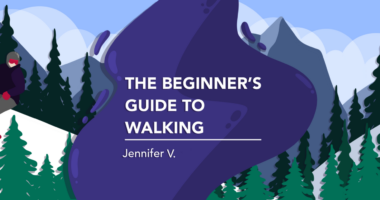How NMOSD has made me a more empathetic person
I'm a better friend thanks to the medical hardships I've faced

“The world breaks every one and afterward many are strong at the broken places.” — Ernest Hemingway, “A Farewell to Arms”
One of my favorite things to do is prepare a meal while a good friend is seated at my kitchen bar, a wine glass or cup of tea in hand, and catch up on each other’s lives. It’s rare that I get this one-on-one time with anyone because life is full and hectic in a beautiful way.
Inevitably, the topic of our hardships will come up. As I chop vegetables and neatly place them on a serving plate (one of my favorite appetizers to share), I listen to their current challenge. In our 40s, we’re at that age now that we worry about our health and how to benefit it. Without fail, though, my friends will tell me what they’re dealing with and then say, “I shouldn’t complain to you. I know you deal with a lot more.”
NMOSD can be lonely
Until I met other patients with neuromyelitis optica spectrum disorder (NMOSD), I struggled to articulate what I was going through. Once I recovered from transverse myelitis and optic neuritis attacks, NMOSD became what usually is an invisible disease for me. It’s the daily grind of pills, pain, exhaustion, and weakness in my limbs that the rest of the world doesn’t see or understand.
I love my friends and know they care a lot for me, too. However, I sometimes find that they shield me from their hardships because they don’t want to burden me with them. It’s a kind and loving gesture, but it does make me feel lonely. When they minimize their truths around me, I think of that Hemingway quote. I wish they understood that their hardship doesn’t impact mine, and vice versa. I want them to know that I’m capable of just listening and being there for them, even with NMOSD as part of my existence.
I can compartmentalize the stressors in my life, but being a good friend isn’t one of them.
Empathy versus sympathy
Dr. Brené Brown narrates a great animated video about the difference between empathy and sympathy. “Empathy,” Brown says, “is feeling with people.”
In my early years with this disease, I struggled with my loved ones’ reactions. While I couldn’t articulate exactly what bothered me, I knew there was something about what they said and how they said it that could really upset me. It didn’t help that my thoughts were fueled by steroids at the time. My loved ones tried to understand, but NMOSD was foreign to them, too. Their responses were sympathetic; they’d listen, ask a few questions, then try to cheer me up.
This is where lifelong patients, like those of us with NMOSD, have an advantage. To be empathetic, one has to listen to the other person, then mentally recall a moment when we might’ve felt the same way in order to relate to them. Those of us living with NMOSD have a wealth of those moments to draw upon.
It’s at this junction that I tell my friend they aren’t burdening me. While I may be concerned for them, I promise that it won’t stress me out. I also tell them that my experience with NMOSD doesn’t minimize the reality of what they’re going through.
While everyone has the capacity to learn how to be empathetic, rare disease patients have it thrust upon us. We have a wealth of knowledge on how to navigate emotional stress, deal with the medical system, manage personal relationships through difficult times, and cope with feeling broken. And as Hemingway points out, it’s in these moments that NMOSD patients find our true strength — and our ability to be better friends.
Note: Neuromyelitis News is strictly a news and information website about the disease. It does not provide medical advice, diagnosis, or treatment. This content is not intended to be a substitute for professional medical advice, diagnosis, or treatment. Always seek the advice of your physician or other qualified health providers with any questions you may have regarding a medical condition. Never disregard professional medical advice or delay in seeking it because of something you have read on this website. The opinions expressed in this column are not those of Neuromyelitis News or its parent company, Bionews, and are intended to spark discussion about issues pertaining to neuromyelitis optica spectrum disorder (NMOSD).







Leave a comment
Fill in the required fields to post. Your email address will not be published.